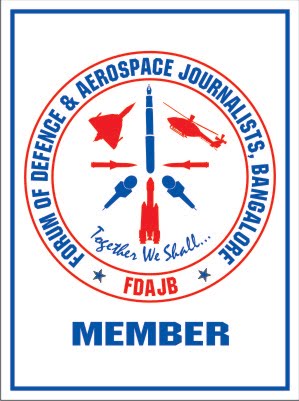 |
| Sharan Palan, a 23-year-old network engineer working in Mumbai, has been chosen as the Tarmak007 Follower of The Year 2014 on FB. |
Greetings!
Sharan Palan, a 23-year-old young man, passionately chasing his dreams, is the Tarmak007 Follower of The Year (#TFOTY).
Sharan’s father is a retired hotel waiter and mother is a housewife. Sharan is currently working as a Network Engineer (L1) in Mumbai. He is a 12th pass and couldn’t complete is graduation owing to financial worries on the home front. In the meantime, he managed to complete a course in hardware networking.
Hailing from Kaup, a small-time village in Mangalore, Sharan has been a hardcore follower of Tarmak007 right from the moment the blog made its presence on FB, back in January 2013. “I remember when I liked this page, the number was 104. That was on the first day of the blog on FB,” says Sharan.
Surprised at being a winner: The humble kid was absolutely surprised when Tarmak007 chased him down asking for his number. “I wanted to always join the armed forces, but couldn’t, may be because I was very thin. But, I enjoyed my 2-year stint in NCC,” says Sharan.
Once the telephonic interview was over, Tarmak007 received a message on FB, which was moving. “Thank You Sir.. First time winning anything in my life… My mother will be really happy.” Sharan’s mother is currently bed-ridden after an unfortunate accident at home.
“Only last one month I couldn’t visit Tarmak007 regularly as I was taking care of my mother. There’s no proper network in my village,” says Sahran
In love with Mumbai: Sharan loves Mumbai and he just returned after being with his mother. “I love this city. It gives lots of hopes and if you can really work hard, you can achieve your goals. Sir, Mumbai is full of energy, and always crowded. Getting a job is not a problem here,” says Sharan.
Mamma’s boy: Sharan gets around Rs 12,000 and after his monthly expenses are taken out, he still saves some money to be sent to his mother. His elder sister is married and now settled in Mumbai. When asked about his dreams, Sharan said: “My dream is to support my mother. She supported me so much. And, it’s my turn to make her happy. Always…”
When, the interview was done, Sharan had a request. “It’s okay, if you want to give this award to someone else. Speaking with you itself is a big award for me. I have always appreciated the amount of time and energy that goes behind updating the blog. I see many blogs sharing from Tarmak007,” says Sharan.
Why Sharan? For the last 2 years, Sharan has been an avid follower of the blog. He always appreciated the achievements of Indian defence and most of his comments were short. Every time, the blog crossed a milestone, Sharan was the first to respond. While the blog had some passionate followers of late, who could probably overtake Sharan with their GK levels, I stuck to loyalty and simplicity – 2 key factors I saw in the follower.
Hence, Sharan Palan becomes the Tarmak007 Follower of The Year 2014.
The first special awardee: Anish Puri has been chosen as the first special awardee. Anish has been a devoted follower of the blog and has probably not missed a single post in the last couple of months. He has followed Tarmak007 like a shadow and even has been very active on the Twitter as well. Anish seems to be having good knowledge levels on world defence as well.
Second and third special awardees: Shubham Sahai and Ashok Nayak have been chosen as the second and third special awardees. Both have been active on the blog. Their comments are always decent and to the point.
The awards: Sharan Palan will get to spend one day with the Tarmak007 during Aero India 2015. His stay in Bengaluru and entry to the air show will be sponsored by the blogger. He will also be presented a table-top model of Tejas, courtesy ADA. In addition, he will also receive a one-year free subscription of Hamari Fauj Hindi defence magazine.
The first special awardee will get a 2014YONEX Pro Series Backpack, sponsored by Uttsav Mishra, former international badminton player and currently coach of Senior Indian Badminton Team (Core Group). He is also the Chief Coach of Air India Badminton Team. Uttsav is an avid follower of Tarmak007.
The second and third special awardees will get a 2015 Diary/Organiser.
Finally...: There are others as well who have been following the blog vigorously. Pratik Das, Kedar Karmarkar, Arnav Pai, Basani Satheesh Kumar, Goboor Vivek, Onam Mukherjee, Sreekuttan Kadakkal, Meenakshi Lekhi, Neeraj Mishra, Anshul Anand, Rahul Devnath, Saurav Jain and Bhuvanesh to name a few. I might have definitely missed out many names and it’s no easy task to remember all!
While I thank each and every one for keeping the philosophy of the Tarmak007 intact – Clean Blogging – I have one request to all the knowledgeable visitors to Tarmak007. “Educate every visitor, in case they are ignorant of the facts and figures. Do not make fun and deflate their passion. Simplify the facts so that everyone understands the complexities of aerospace and defence.”
Tarmak007 is a blog that aims at educating the common man on India’s aerospace and defence might. With your help, I am sure we can inspire more souls every day.
Congratulations to Sharan! You have truly inspired me. He can be reached at: sonupalan578@gmail.com
Remember, it’s your blog! Happy New Year to all!
Regards
Tarmak007





































































